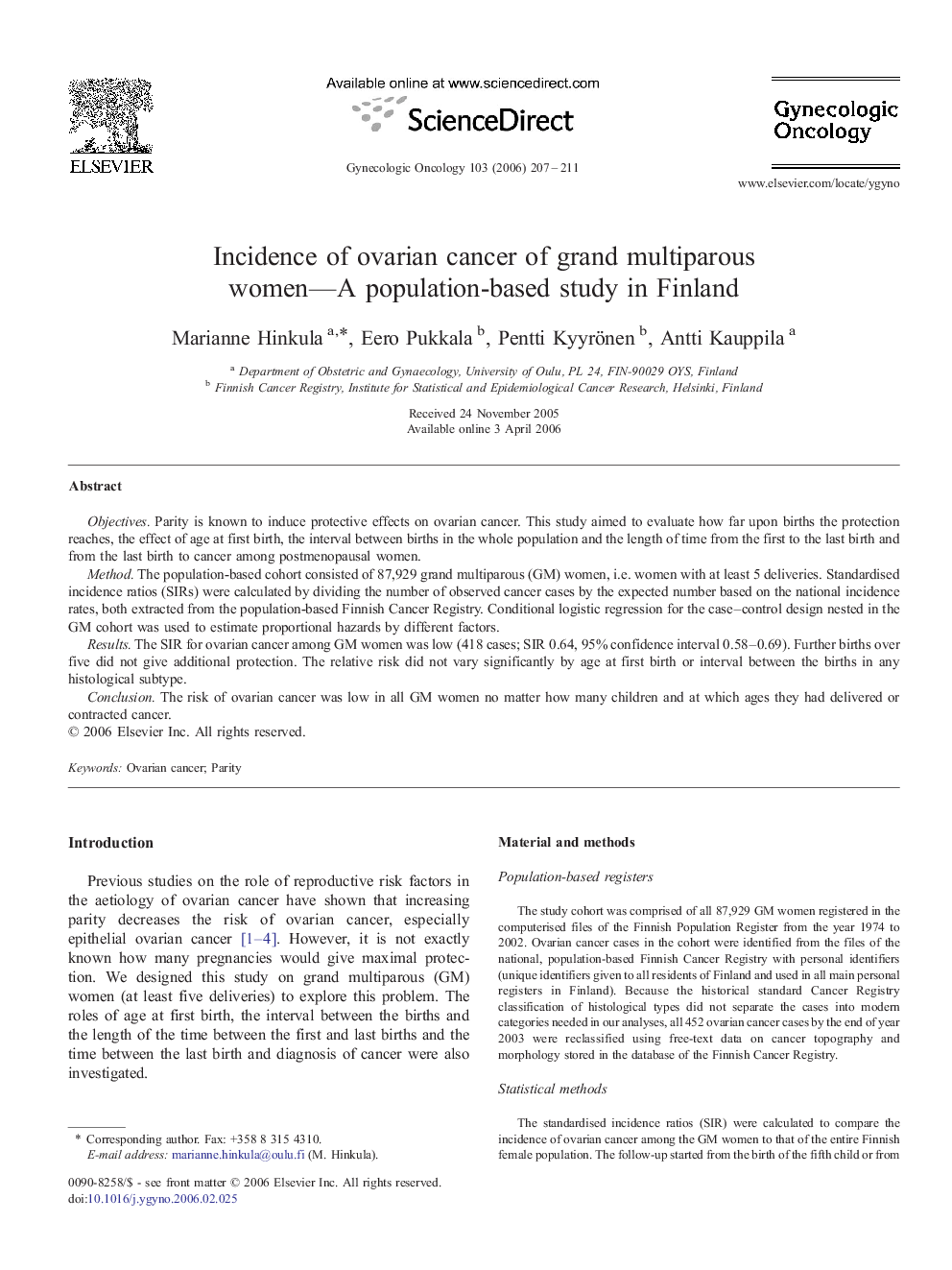| Article ID | Journal | Published Year | Pages | File Type |
|---|---|---|---|---|
| 3946602 | Gynecologic Oncology | 2006 | 5 Pages |
Objectives.Parity is known to induce protective effects on ovarian cancer. This study aimed to evaluate how far upon births the protection reaches, the effect of age at first birth, the interval between births in the whole population and the length of time from the first to the last birth and from the last birth to cancer among postmenopausal women.Method.The population-based cohort consisted of 87,929 grand multiparous (GM) women, i.e. women with at least 5 deliveries. Standardised incidence ratios (SIRs) were calculated by dividing the number of observed cancer cases by the expected number based on the national incidence rates, both extracted from the population-based Finnish Cancer Registry. Conditional logistic regression for the case–control design nested in the GM cohort was used to estimate proportional hazards by different factors.Results.The SIR for ovarian cancer among GM women was low (418 cases; SIR 0.64, 95% confidence interval 0.58–0.69). Further births over five did not give additional protection. The relative risk did not vary significantly by age at first birth or interval between the births in any histological subtype.Conclusion.The risk of ovarian cancer was low in all GM women no matter how many children and at which ages they had delivered or contracted cancer.
